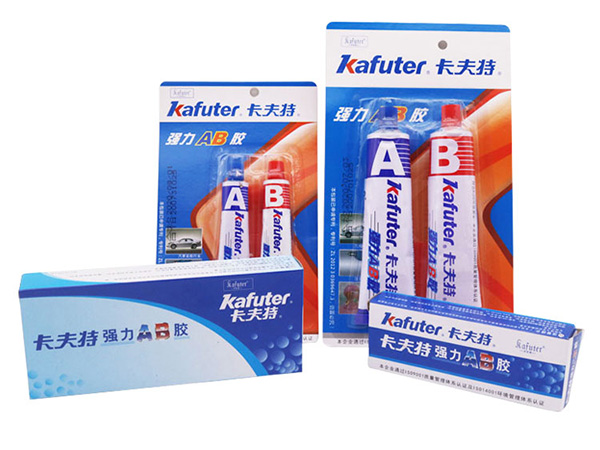Some people think that silicone sealant, polyurethane sealant, epoxy structural glue is solidified after the hardness of the harder the better, in fact, it is not that hard, because the colloid hardness is too hard to add a lot of filler, that is, calcium carbonate, so the glue is lack of elasticity and toughness, colloid is brittle, easy to break, tensile and buffering ability will be reduced, the adhesive performance of glue needs to be considered in many aspects, Sometimes we judge the quality of sealant also has many aspects, taking into account the impact of sealant performance:
There are many kinds of sealant, widely used, raw materials for equipment sealant varieties, performance is also different.
Therefore, in the sealant fit, the slight change in its composition will also have a great impact on the performance. So in the selection of sealant, should consider liquidity, temperature and; Factors such as pressure, compatibility and permeability, weather resistance, mechanical properties, dynamic environment, color stability, flammability, maintenance and construction techniques, and surface treatment.
Physical properties of sealant:
1) Rheological property of sealant
Commonly used sealant usually has two categories, that is, non-contact degeneration of the artesian and thixotropic non collapse. The former can flatten after application; The latter is sometimes similar to paste, can not level, can be used for vertical surface and other parts. The viscosity of liquid sealant is generally not more than 50kPa.s. Beyond this viscosity value, the glue is similar to putty or paste.
2) Use temperature and pressure range
Sealant should have a wide range of temperature and pressure. Temperature resistance should take into account two factors: the possible temperature limit, the amplitude of temperature rise and fall, and the cycle frequency. Temperature has different effects on different sealants. Some sealant will lose strength but still maintain softness, but some will be brittle, and sealant will be completely decomposed at high temperature, should also consider thermal shrinkage, elongation and mechanical property changes. Compression resistance depends mainly on the strength of sealant and joint design. Silicone rubber can be made into the best high temperature resistant sealant, it can be used for a long time at 205 ° C, short time use temperature up to 260 ° C, fluorine silicone rubber can be used continuously at 260 ° C. Polysulfide sealant vulcanized with dichromate manganese dioxide can withstand 107℃; Ternary copolymer acrylic acid can resist 175℃, acrylic latex only 73℃.
3) Compatibility and permeability
Chemicals can cause sealant to decompose, shrink, expand, become brittle, or penetrate. Therefore, the compatibility and permeability of sealant should be considered when used. For example, some sealant can absorb a small amount of moisture, which causes changes in the aging resistance and chemical corrosion resistance of sealant; However, other one - component sealants require moisture absorption in order to cross - link curing. If a sealant permeability is poor, the isolated gas will remain in the joint. The moisture permeability value of a sealant depends on the selection of polymer, filler and plasticizer in the formula.
4) Weather resistance
Under outdoor working conditions, sealant should have different degrees of resistance to water, heat, cold, ultraviolet and sunlight according to its use occasions. In the industrial field, sealant materials must be resistant to acid fog; In the sea must be resistant to salt spray, UV on some sealant has great damage. Polysulfide sealant is sensitive to heat, while polyurethane is sensitive to water, and silicone rubber is both resistant to water and heat.
5) Mechanical properties
The mechanical properties of sealant include strength, elongation, compressibility, elastic modulus, tear and fatigue resistance. According to the use of different conditions, some sealant may not require strength, and some sealant is required to phase some structural adhesives as large as shear, tensile, peeling strength. For the sealant used in joints, its volume expansion and compression deformation properties are very important. When the joint volume is small, the sealant is squeezed; When the joint volume increases, the sealant is stretched. The mechanical properties of sealant are affected by the width, depth, shrinkage and ambient temperature of the joint. In many mechanical properties of sealant, constant elongation stress is a very important mechanical properties index. In the use of sealant, especially in the joint sealing and damping damping parts of the seal, generally requires low constant elongation stress. For example, the inner butyl sealant and outer vulcanized sealant used for bonding and sealing of insulating glass members all have low constant elongation stress, so as to absorb the stress generated on the insulating glass for various reasons and avoid the glass breaking due to stress concentration. Wear and mechanical wear have obvious effects on sealant, flexible sealant, especially polyurethane, neoprene rubber have good wear resistance.
6) Adhesion
The main factors affecting adhesion include the interaction between the sealant and the adhesive surface, the shape of the adhesive surface, the smoothness and the substrate used. Usually, sealant can not withstand the external strong stress, the constant elongation stress of sealant changes with humidity. When the sealant is used for a dynamic sealing joint, an anti-bonding protective layer should be added at the bottom of the joint to prevent bonding and avoid excessive stress. In addition, it is also affected by joint design, material and environmental factors related to sealant.
7) Dynamic environment
Rapid change of stress will cause vibration, cyclic change will cause fatigue failure. Under dynamic load, good flexibility sealant should be selected.

